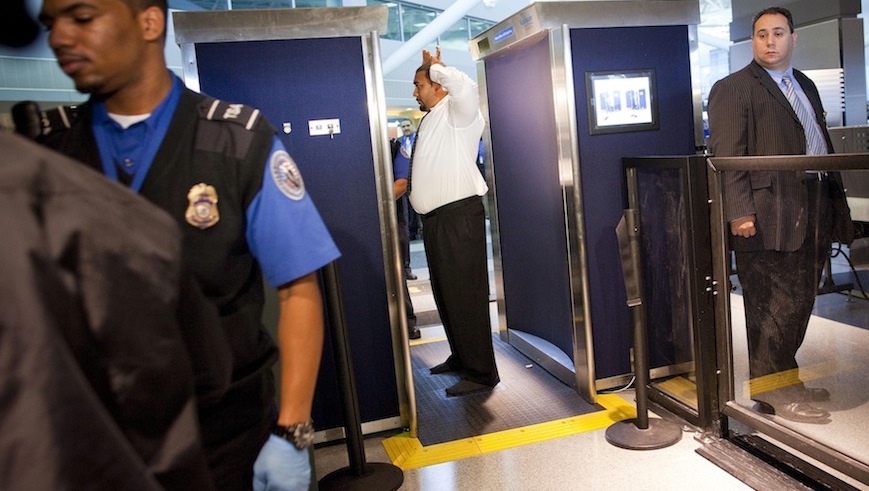If you’ve gone through airport security in the U.S. any time recently, you may have found yourself getting up-close-and-uncomfortable with airport security.
It may seem like it’s not anything new for post-9/11 America. Transportation Security Administration (TSA) agents can and will search any passengers in the name of safety.
But the intensity of the pat-downs has reached a level where TSA agents warned local police departments some travelers might think they were victims of a criminal act, according to Bloomberg.
A March letter issued by the TSA warned local police departments that new policies could lead to some customers claiming of “abnormal” pat-downs.
“Passengers who have not previously experienced the now standardized pat-down screening may not realize that they did in fact receive the correct procedure, and may ask our partners, including law enforcement at the airport, about the procedure,” a TSA spokesman wrote in the March email obtained by Bloomberg.
A TSA spokesman said pat-downs have been a standard practice for years.
“TSA’s standard patdown can include inspection of sensitive areas such as breasts, groin and buttocks,” a spokesman said. The pat-down procedures were previously changed in 2010.
Only a small percentage of passengers get a pat-down at any given time, but frequent fliers are liable to have had hands all over them at one point or another and sometimes more frequently.
Pat-downs are typically utilized to resolve metal detector alarms, done at random, or for people who opt out of screening through full-body scanners. Even TSA pre-checked passengers may get patted down.
To keep the process civilized, TSA protocols direct agents to use the backs of their hands, and for an officer of the same gender as the passenger to conduct the pat-down.
Does it feel like a grope? That may be because a certain level of pressure needs to be used during a pat-down.
“Pat-downs require sufficient pressure to ensure detection, and areas may undergo a pat-down more than once for the TSA officer to confirm no threat items are detected,” TSA’s website states. “TSA officers use the back of the hands for pat-downs over sensitive areas of the body. In limited cases, additional screening involving a sensitive area pat-down with the front of the hand may be needed to determine that a threat does not exist.”
If you feel uncomfortable getting pat down in public, you have the option of asking to have a private pat-down, with a second officer of the same gender present.
These pat-downs have been widely criticized. A Washington Post editorial called the TSA invasive, annoying – and unconstitutional. But most people seem content to simply grit their teeth and bear it.






















